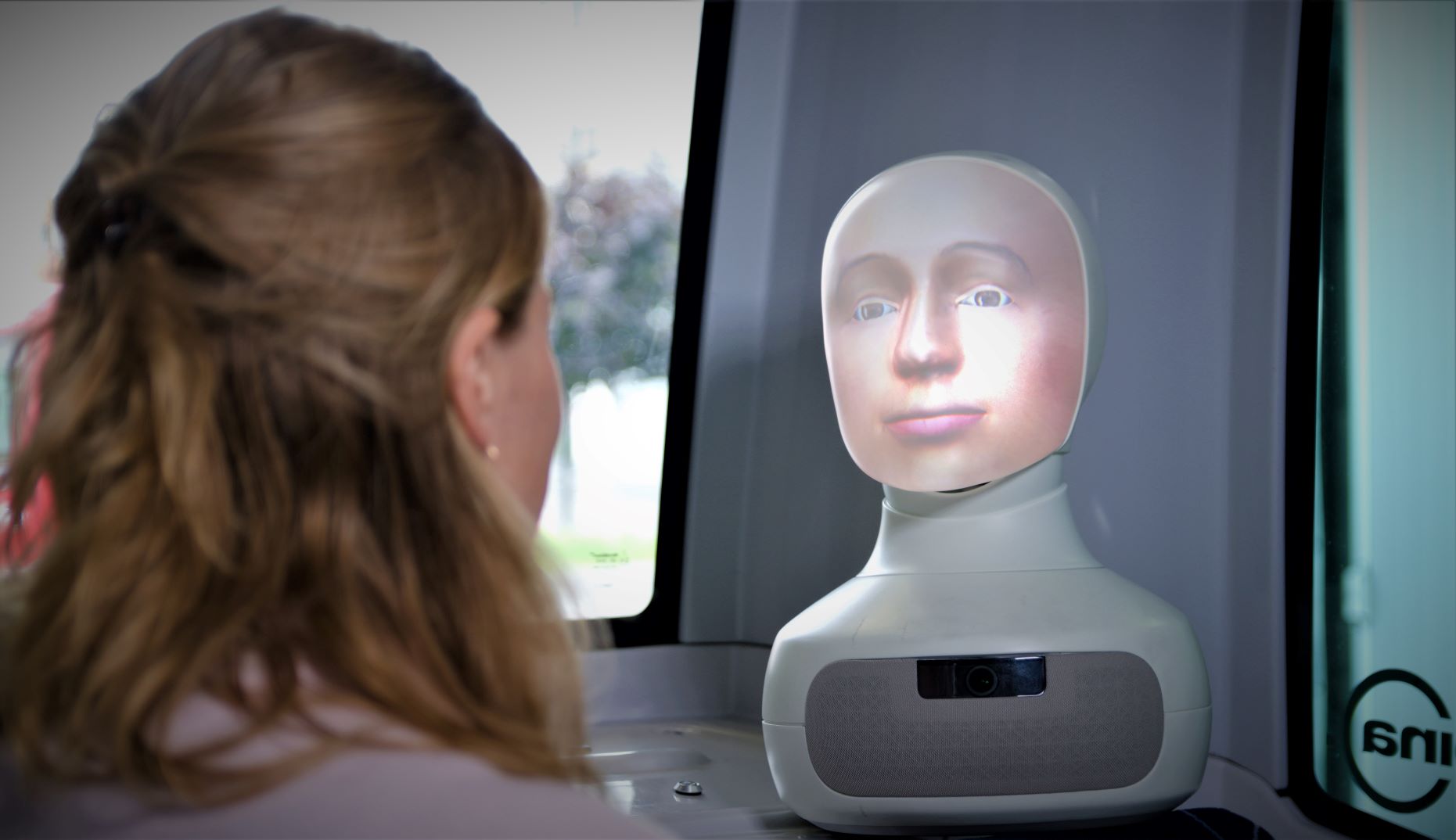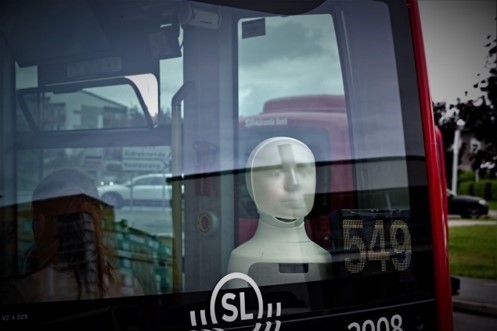Social robots accelerating the transition to sustainable transport
The driverless bus has many advantages, being for example a decrease in the number of accidents and a reduction in carbon emissions. But taking the driver out of the vehicle also means that there is no longer physical supervision in the bus, nor is there a point of contact for questions from passengers. Social robots could be a viable opportunity to substitute the interpersonal aspect of the bus driver.

These robots are artificial intelligence systems, that are designed to communicate and interact with other robots and with humans. The idea behind the implementation of social robots in driverless public transport is to increase the perceived level of safety of passengers, and with that boost its attractiveness. If successful, the social robots could also be deployed in traditional public transport.
A social robot in a driverless bus
While one might have previously thought that human-like machines were just for science fiction movies, social robots have rapidly become more advanced and are nowadays even tested in real-life applications. Unique human characteristics, such as neck movement, eye gaze and lip syncing have increased the robot’s validity. Now the challenge lies in designing robots that can cope with the messy and unpredictable behaviour of humans. Successful application of social robots is already found in various (medical) environments, but are new in public spaces. Therefore, it is vital to systematically assess what factors contribute to the feeling of safety of passengers, how the Furhat robot could contribute to this and how an improved feeling of safety can be measured.
Project plan
The project will be executed as three consecutive work packages:
- The start of the project will be about familiarising with current similar applications of social robots in public spaces. It will be assessed what kind and level of assistance for bus passengers is desirable and to what extent a social robot could fulfil these needs. Also a framework will be designed for evaluation of the experience of participants.
- In the second phase of the project a preliminary design of the robot will be made according to the requirements set in phase 1. Testing of the robot will initially take place in a controlled environment with a limited number of participants. An iterative design process will allow for continuous improvement in the understanding of passenger’s needs in relation to the capabilities of social robots. The aim is to experiment in increasingly complex environments, such that the final design is compatible with real-life situations.
- In the final stage of the project the desire for and feasibility of upscaling is considered. The most important question to be answered is whether the social robots indeed enhance the passenger’s experience and whether the implementation of the social robot is likely to increase the use of driverless public busses.

Further information
On behalf of KTH, ITRL and TMH (Institution för Tal, Musik och Hörsel/ Department of Speech, Music and Hearing) are leading the project and they are working in collaboration with Furhat Robotics . The project is financed by Energimyndigheten and Furhat Robotics.
The project runs from July 2020 until July 2024.
Funded by


